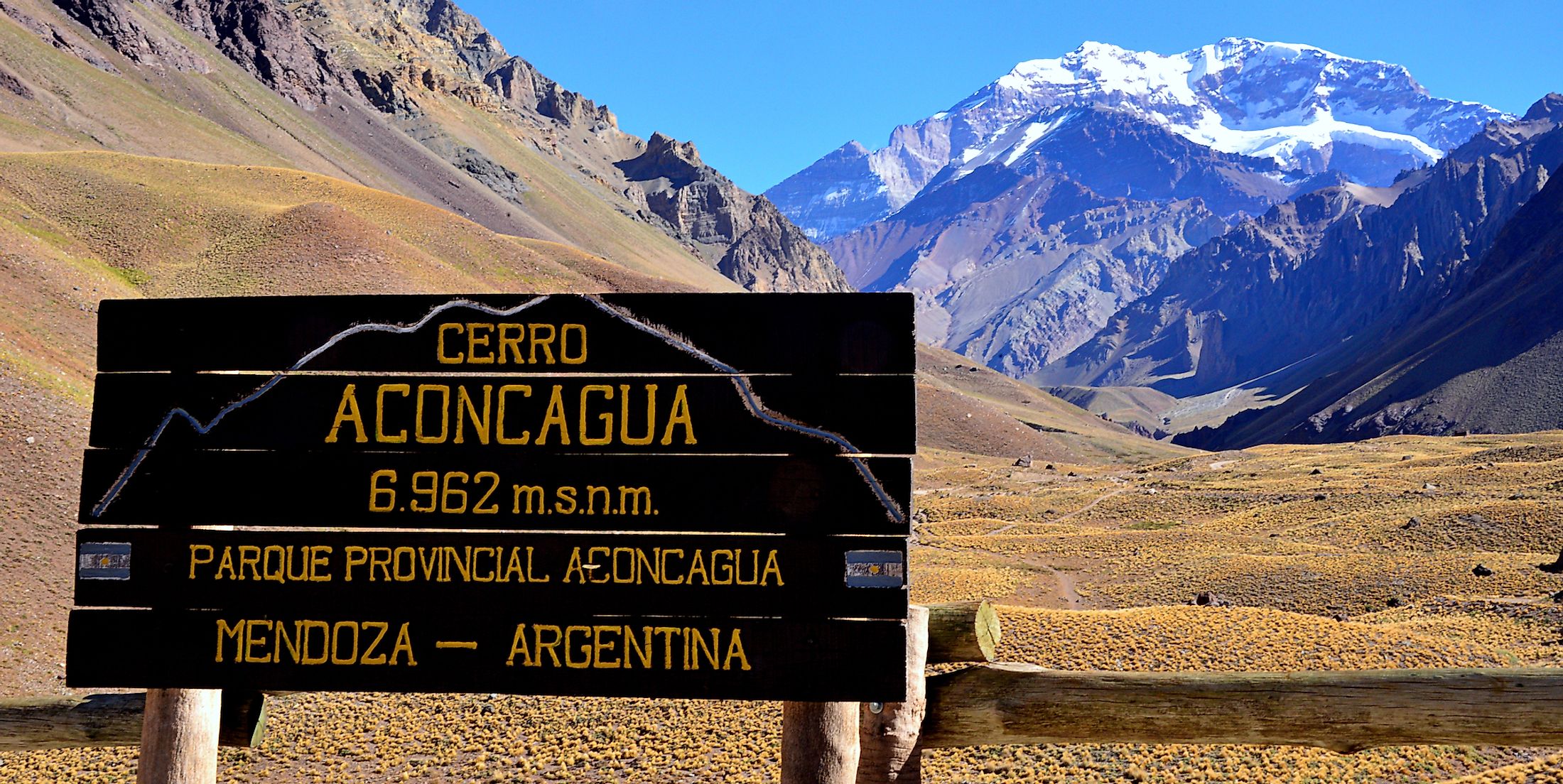
Mount Aconcagua
From Mount Everest to K2 and Lhotse, Asia is home to some of the world’s tallest mountains. In fact, all the mountains with elevations of 7,000m (or greater) above sea level are located in the continent, with the vast majority situated in China, Nepal, India, Pakistan, and Bhutan. According to the available data, Asia is home to the first 188 tallest mountains on Earth. Whenever the tallest mountains on Earth are mentioned, some people want to know which of the mountains is the tallest outside Asia. Well, the honors for the tallest mountain in the world outside Asia go to Mount Aconcagua, at 6,962 m above sea level. However, it is the world’s 189th tallest mountain and approximately 1,887m shorter than Mount Everest, the world’s tallest mountain.
Where is Mount Aconcagua?
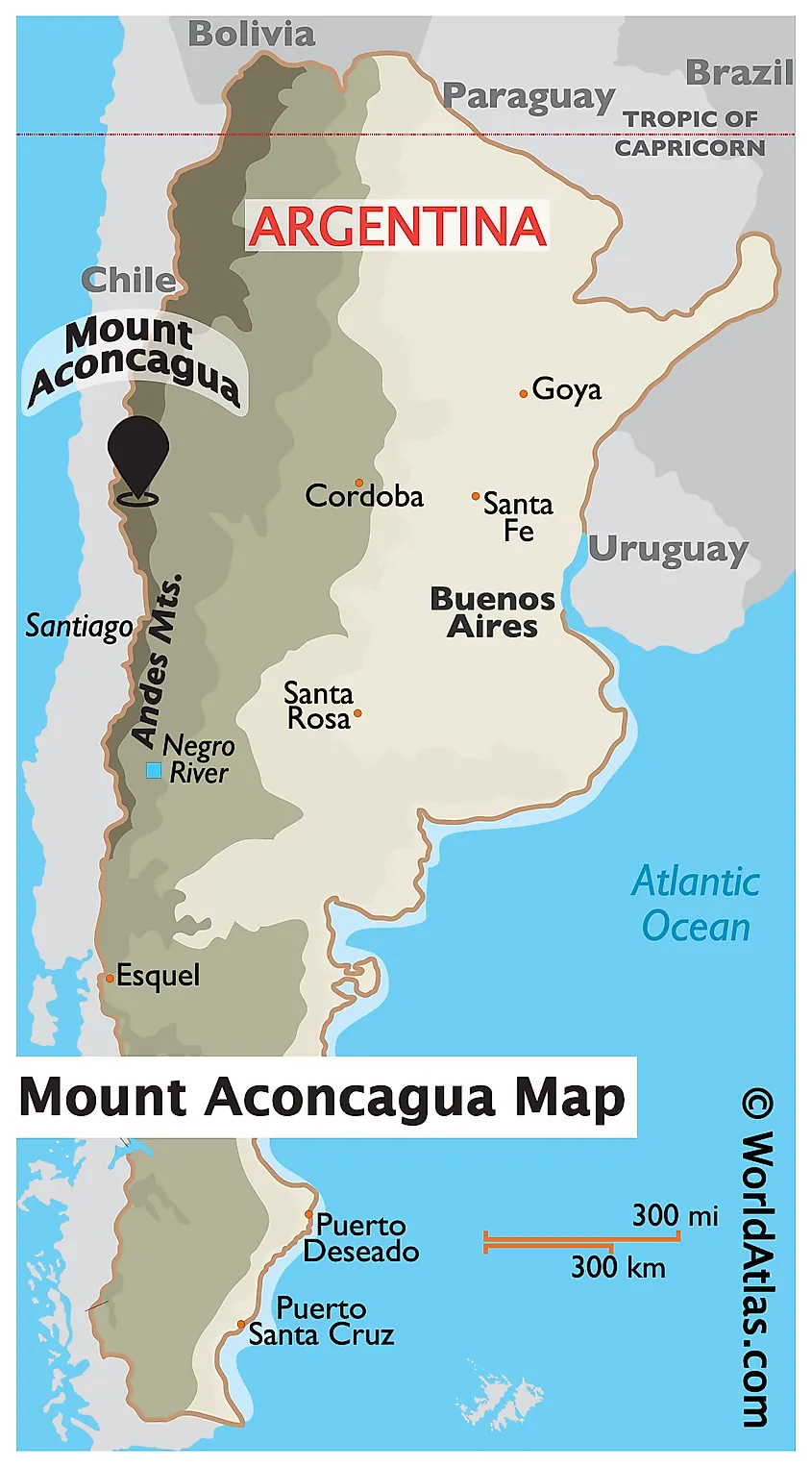
Mount Aconcagua is the highest mountain in South America and the tallest in the Western and Southern Hemispheres. It is one of the mountains in the Principle Cordillera, a mountain range in the Andes making up the boundary between Argentina and Central Chile. Aconcagua is located in Argentina (near the border with Chile) and dominates the skies of western Mendoza Province. It is located approximately 112 km of the city of Mendoza; about 15 kilometers from the boundary between Argentina and Chile; and about 5km from the San Juan Province. However, the mountain’s western flank builds up from Chile, on the coastal lowlands near Santiago de Chile. Mount Aconcagua is considered as one of the world's “Seven Summits” (each of the seven tallest mountains in each continent).
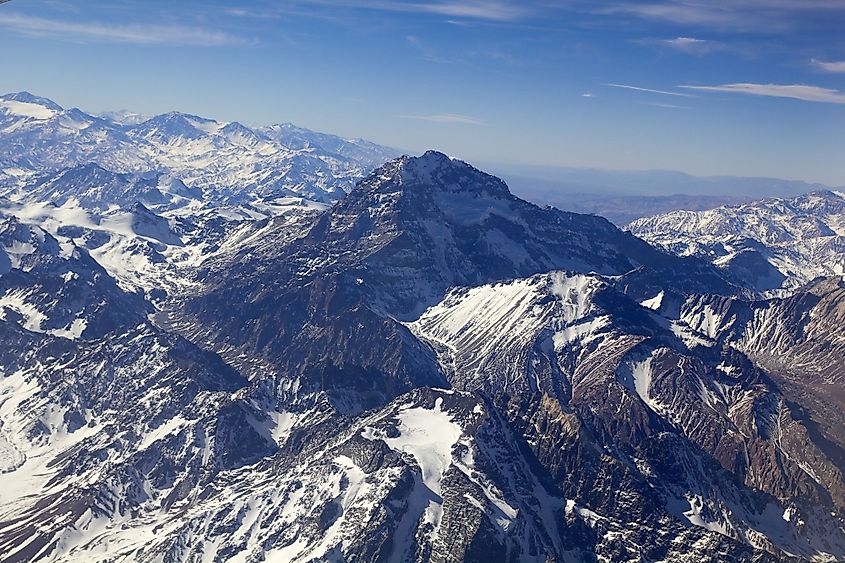
Formation and Geography
Mount Aconcagua forms a part of the Southern Andes Mountains and is believed to be of volcanic origin. The mountain was formed when the heavier Nazca Plate dived beneath the South American Plate through a process known as subduction. However, the mountain itself is not an active volcano (it was active from Late Cretaceous to the Miocene period, about 8-10 million years ago). Aconcagua has two peaks, southern and northern peaks, connected by the one-kilometer-long Cresta del Guanaco ridge.
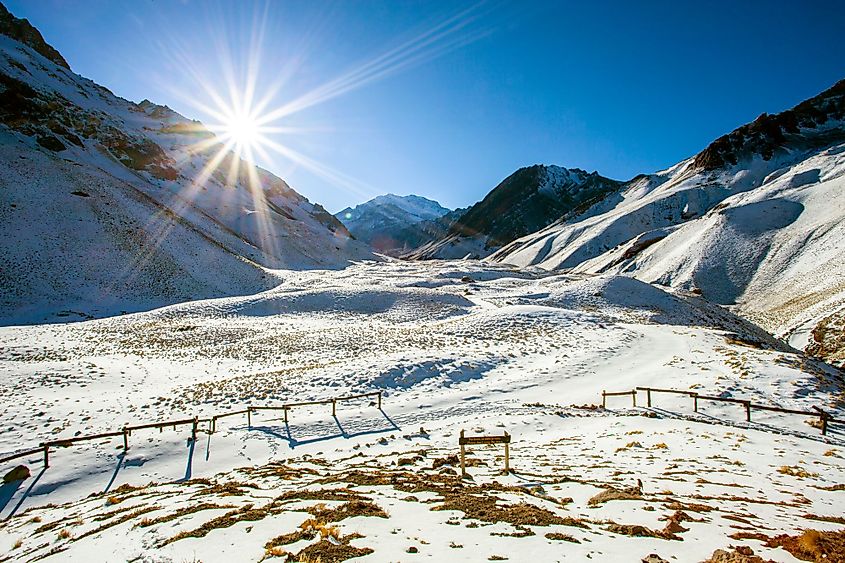
Although the mountain is widely considered the tallest outside Asia, its elevation has been debated since the 20th century. According to multiple sources, the mountain is 6,960.8m tall above sea level. Giorgio Poretti, an Italian geologist, measured its height using GPS technology in 2001 and recorded 6,962m above sea level. However, the Argentinian Government nor the US National Geographic Society officially recognize the new figure. The southern summit (the shorter of the two summits) is 6,930m above sea level.
Mount Aconcagua and the surrounding area, including Plaza de Mulas and Horcones Lagoon, are designated Aconcagua Provincial Park. The mountain also contains glaciers, of which Ventisquero Horcones Inferior is the largest, at 10km. Other glaciers are Polish Glacier, the Ventisquero de las Vacas Sur and Glaciar Este.
Climbing History
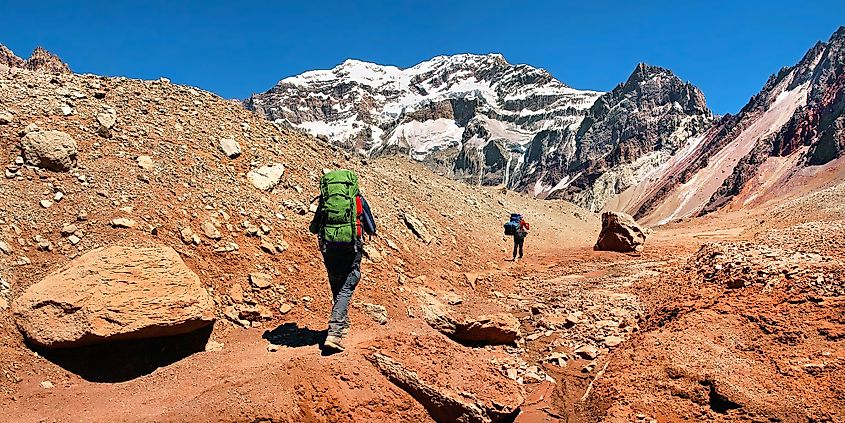
Although several attempts to summit Mount Aconcagua were made before, the first recorded attempt was in 1883 by Paul Gussfeldt and his party. However, he failed on the two attempts, reaching 6,500m. The route Paul used is now the main route up the mountain. In between 1896 and 1897, a European expedition, led by Edward FitzGerald, also attempted to summit the mountain. However, Matthias Zurbrigen (a Swiss guide) became the first person to reach the summit on January 14, 1897. One month later, Nicola Lanti and Stuart Vines also reached the summit. FitzGerald failed to ascent the mountain in all his eight attempts.
A Polish expedition, comprising Wiktor Ostrowski, Konstanty Narkiewicz-Jodko, Stefan Osiecki, and Stefan Daszyński, was the first to scale the east side, reaching the summit on March 9, 1934. A French team, led by Guy Poulet and six others conquered the South Face, considered the most difficult side, on February 25, 1954. As of 2020 and at the age of nine, Tyler Armstrong became the youngest person to summit Mount Aconcagua. Kaamya Karthikeyan is the youngest girl to have ascended the mountain, reaching the summit on February 1, 2020, at the age of 12 years.
Danger
Today, the climbers use the nontechnical “Normal Route” to reach the summit of Mount Aconcagua because the route does not require any special technology or skill to climb. However, Aconcagua is one of the most dangerous mountains to summit because of its extreme altitude. Several hikers have succumbed to altitude sickness while trying to climb the mountain. At least three people die every year on the mountain, the highest of any South American mountain, earning it the nickname “Mountain of Death.” Besides altitude sickness, improper waste disposal also poses threats to humans and animals. At least 100 people have died on Mount Aconcagua.
Cultural Significance
Mount Aconcagua was considered a sacred mountain by the Incas, who may have built places of worship and made sacrifices there. Aconcagua mummy discovered at 5,167 meters in 1985 dates back to 1500 AD and is evidence the Incas practiced human sacrifices on the mountain. A boy's remains, aged about seven years, were discovered wrapped in feathers, clothes, and grass and kept inside a stone wall.











